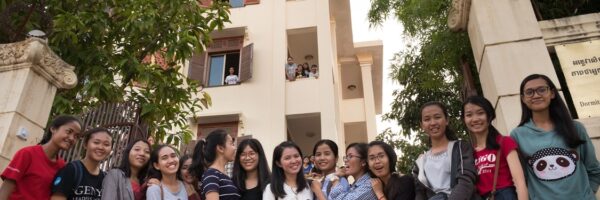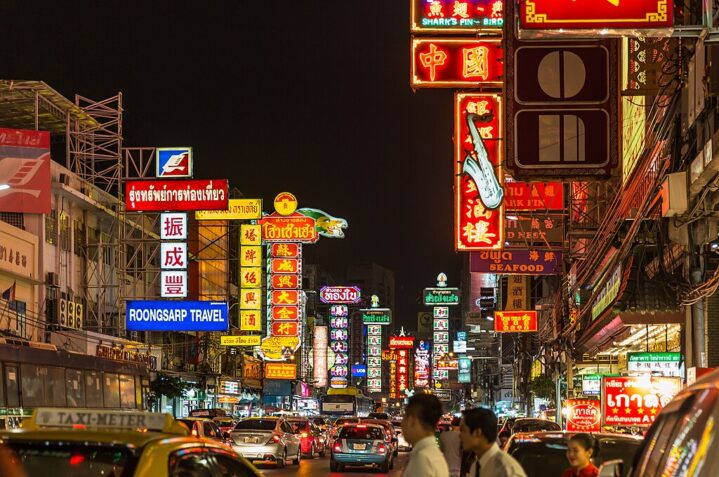
Chinatown or Yaowarat, Bangkok
Bangkok’s most brightly colourful, densely packed, and intensely energetic city section must be Chinatown or Yaowarat.
It has been the home of Thailand’s ethnic Chinese residents for well over two centuries. It is widely considered Asia’s largest Chinatown. In one of city’s oldest sections, Chinatown has retained its ethnic traditions, religious ceremonies, affordable shopping, and bustling business activities since it was first founded.
The origin of Bangkok’s Chinatown
Over two hundred years ago, Chinese merchants from Fujian and Guangdong Provinces originally had an enclave along the Chao Phraya River back when Bangkok was only a small village. These tradespeople resided in what are now the Grand Palace grounds.
When King Rama I decided to move the capital over from Thon Buri on the West bank to Bangkok on the East bank in 1782, he asked the Chinese residents to move to another adjacent section of land called Sampeng. This area was about two kilometres further Southeastwards along the riverbank. The origin of Bangkok’s Chinatown begins from there. From this new settlement, Chinese traders maintained the lucrative maritime junk trade between China and Thailand which grew robustly along with the rise of Bangkok as a great city.
The creation of Yaowarat Road
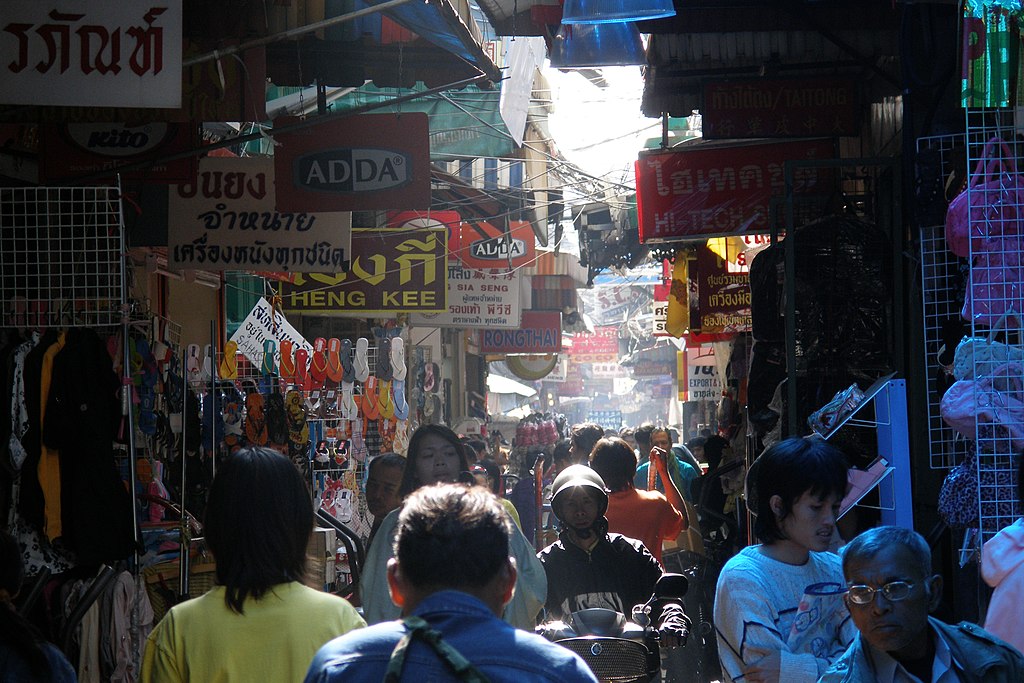
The first footpaths that were established in Chinatown were later to become Soi Sampheng and Sam Pheng Lane (numbered as Soi Wanit 1). However, the main street in Chinatown is called Yaowarat Road. It was created after 1891 when King Rama V directed the construction of many roads in the city.This route serves as the main artery through Chinatown. Some have likened it to a dragon as its body snakes its way through the area.
Charoen Krung Road
The other main area thoroughfare is Charoen Krung Road which was constructed in 1864 as Bangkok’s first paved roadway. Other important thoroughfares include Mungkorn Road, Songwat Road, Songsawat Road and Chakkrawat Road. Also, the Sampheng section of Chinatown is considered the first important trading centre of the city. Most of the area is now narrow pedestrian lanes that have sidewalks and stores overflowing with trade goods and retail wares.
The most expensive land in Bangkok
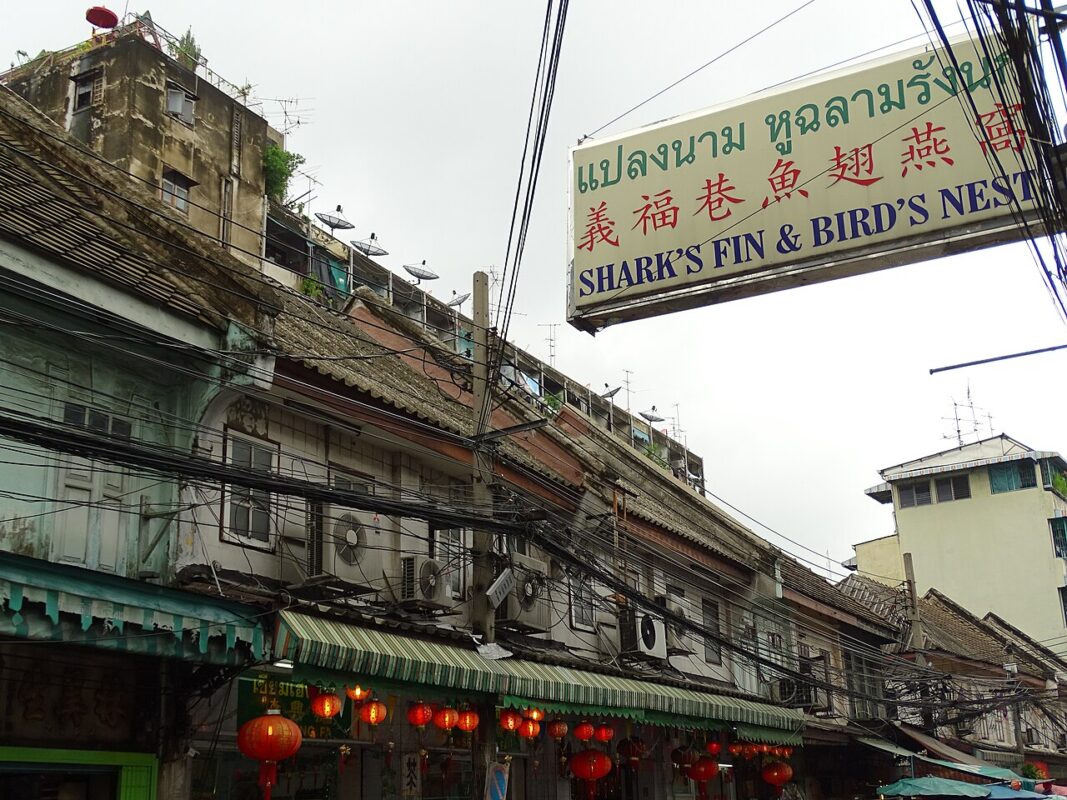
Over the many decades the settlement quickly grew. Now area land prices are the considered the highest in the city since many prominent Thai Chinese families have retained their extensive real estate holdings through the generations. The whole area still retains the traditional Chinese two storey shophouses. This is where business is conducted on the ground floor, and the family resides on the upper floor. All the shop signs are in Chinese and Thai with some signs written in English. Chinatown today covers a rectangle bounded in the North by Luang Road, in the East by the Phadung Krung Kasem Canal, in the South by the Chao Phraya River, and in the West by the Ong Ang Canal. The area covers about two square kilometres.
Chinatown has remained famous for its many gold shops, restaurants, and all manner of trade goods; from incense sticks to kitchen utensils, from Christmas decorations to designer handbags, from live fish to dry food stuffs and Chinese religious icons. The market area primarily serves the local population, but there are frequent visitors and tourists on the hunt for bargains, especially if they want to buy in bulk. These markets areas are a densely packed warren of busy, almost frenetic, maze of roads, alleyways, small side streets and tiny niches filled with an astonishing variety of items for sale.
Historic sites in Bangkok Chinatown
There are several interesting historic sites within Chinatown. Best known is the image of a 5.5 ton Buddha. It is the largest gold Buddha image in the world. Its proper name is Phra Sukhothai Traimit. The three metres high icon is made of pure gold. Originally the image was housed at the Wat Traimitwitthayaram Temple (or Wat Traimit for short). It is close to the Hua Lamphong Railway Station. The statue is now housed at the Samphanthawong Museum, a community museum that features the early Chinese immigrants to Bangkok.
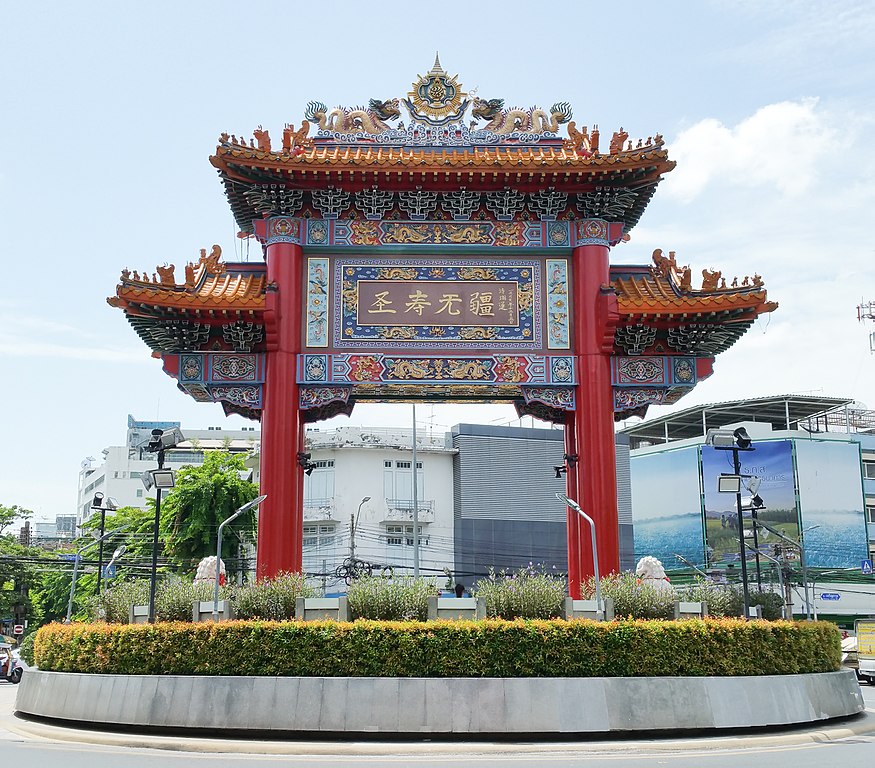
A short distance away is the Odean Gate which was dedicated on 5th December 1999 to commemorate the 72nd birthday of H.M. Bhumibol Adulyadej. The features the early Chinese immigrants to Bangkok. The gate marks the official start of Chinatown. There are four big Chinese characters in the handwriting by H.R.H. Princess Maha Chakri Sirindhorn, meaning ‘Long live the King.’ This area is also called Odeon Circle.
As one of the most interesting sections of the city, Chinatown has retained its unique place. It is certainly still one of the most vibrant parts of Bangkok.


